
Sep 21, 2022 | Residential Air Conditioning, Residential Heating
As unusual weather patterns like relentless heatwaves and bitter cold fronts become more common, the value of having a reliable HVAC unit becomes more apparent. But sometimes, it stops working when you need your HVAC unit the most. Where can you turn for help to pay for repair or replacement? Your homeowner’s policy has helped you with various household repairs in the past. But does homeowner insurance cover AC units? The answer depends on multiple factors. Let’s look at the issue in more detail. What the Standard Homeowner’s Policy Covers Your homeowner’s policy defines the specific conditions under which you’re covered. For example, the typical homeowner’s insurance offers protection against fire. So, if a fire strikes your home, you could expect your insurer to pay for damage to your HVAC. Your insurer’s HVAC system coverage generally also covers vandalism, theft, lightning strikes, and storm damage. For example, it’s not uncommon for an outdoor HVAC unit to need major servicing after a hit from a giant tree limb blown by strong winds. Your homeowner’s policy also offers AC unit coverage but in a different manner. Generally, insurers treat HVAC systems as part of the house while seeing individual AC units as personal property. Flood Insurance The average homeowner’s insurance policy doesn’t cover floods. So, if your home is in a flood zone, you’ll need a flood policy to repair a flooded HVAC. You can look for your area on federal flood maps. But even if you aren’t in a historically flood-prone region, you might find flood insurance a comfort due to changing weather patterns that could impact your HVAC....
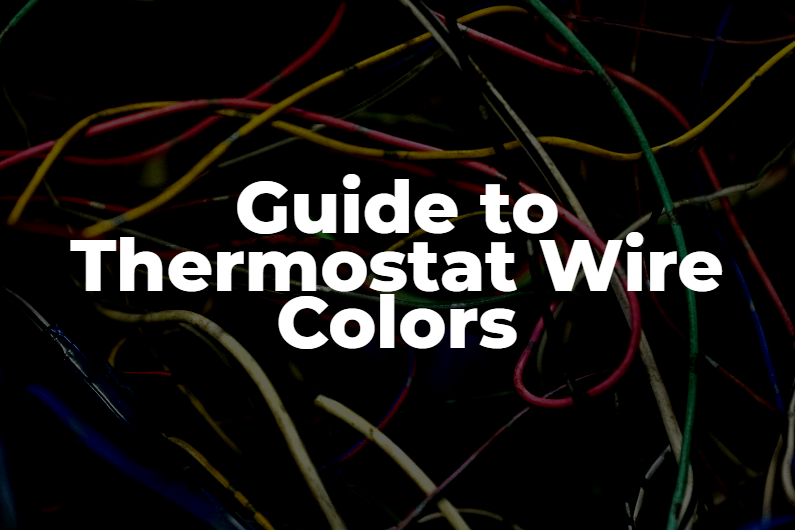
Jun 24, 2022 | Residential Air Conditioning, Residential Heating
Your thermostat determines how often and how long your AC will run. It’s the brains of your home climate control. When it malfunctions, nothing will run properly. The moment you take your thermostat off the wall to replace it, you’ll notice several wires. How do you know which wire goes where? What do all of these wires mean? When you have finished reading this article you will understand thermostat wire colors and thermostat wire letters as well as how to wire thermostats. Safety First Before you begin any project, begin with safety. To rewire a thermostat, you’ll need shock-proof gloves, safety glasses, and insulated boots. If you do receive an electrical shock, your insulated boots will reduce the risk of receiving life-threatening injuries. Also, read the owner’s manual for your thermostat before you begin. Thermostat Wire Colors Each wire color generally means the same thing regardless of your thermostat brand. So when you see a blue wire with a Honeywell thermostat, it will do the same thing that it does with Lennox or Ecobee thermostat. Here is a wire color code for starters. Blue: connects to the B terminal and links to the power source and runs the thermostat Black: connects to the B terminal, is interchangeable with the Blue wire, links to the power source, and connects to a heat pump White: connects to the W terminal and connects to the primary heating unit and the air handler or furnace Red: connects to the R, Rh, or RC terminal and relays 24-volt power to the HVAC unit Rc: connects to the RC terminal and to the cooling power supply Rh: connects to...
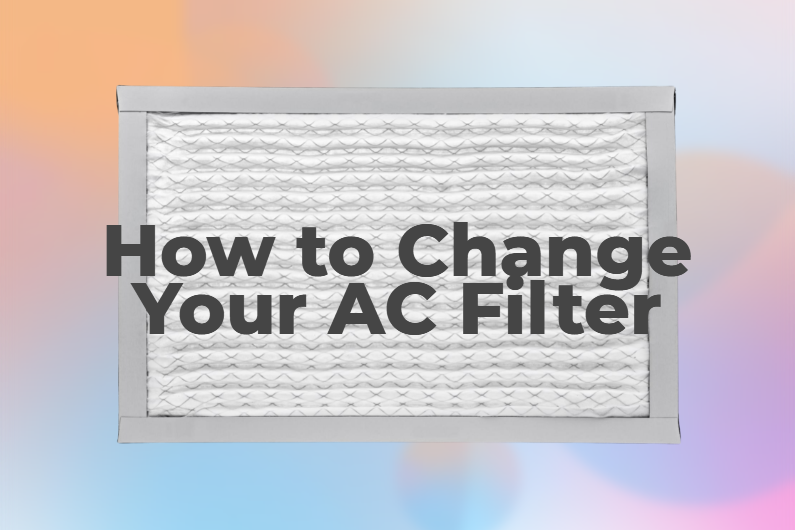
Mar 28, 2022 | Residential Air Conditioning, Residential Heating
Did you know that over 90% of homes nationwide have air conditioner units? Your AC filter is one of the most basic parts of your AC unit, but it makes a crucial difference in the longevity and performance of your AC or HVAC system. Have you wondered ‘how to change AC filter?’ Regularly changing your air filter can help you avoid costly repairs and services down the road. It is also cost-friendly and easy to change! If you aren’t sure where to start, we have put together a complete guide on AC filter replacements, how to change them, and how you can improve your AC’s performance, so keep reading for more information! Air Conditioner Types The type of air conditioner you have will play a role in how you replace a filter. There are three main types of filter units you may have: Central air conditioner Air handler cabinet Window AC Central air conditioner filters are found in the return duct. Outside AC unit filters are also found in this region too. Air handler cabinet filters can be reusable or disposable, so consult your manual before tackling this project. Lastly, window AC units are relatively straightforward. Simply locate the front of the unit, and after you remove the cover, you should easily detect the filter. Is an HVAC Filter Different Than an AC Filter? Heating and cooling air filters are the same, and replacing one can help the other in HVAC units. The only exception is wall-mounted air conditioners with completely separate furnaces. Air handler cabinets often release the same air from the furnace or AC unit. HVAC filters can...
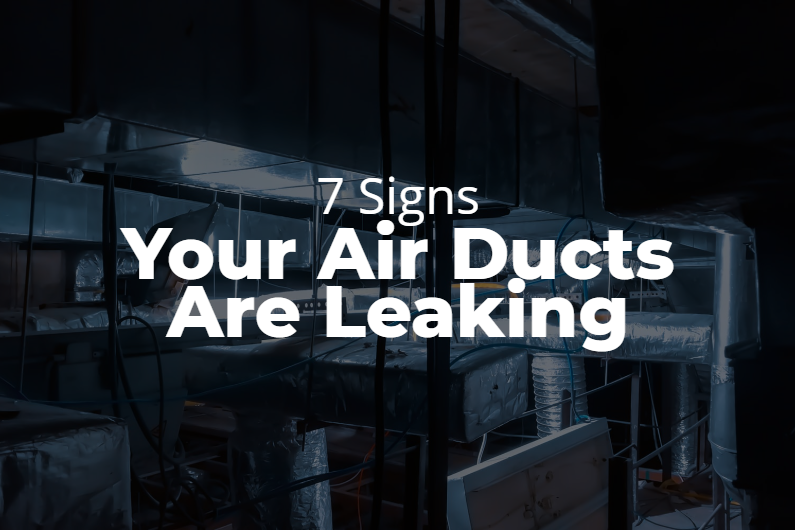
Dec 15, 2021 | Residential Air Conditioning, Residential Heating
It is important to know the signs of an air ducts leak so you can quickly and efficiently fix them. There are many different leaky air ducts leak signs that your home may be suffering from if you have not noticed yet. Here are some of the most common leaky air ducts leak signs: 1. It’s been a while since you’ve had your ducts cleaned It’s been a while since you’ve had your ducts cleaned. Cleaning them is an important part of maintaining your home and preventing expensive repairs in the future. A professional duct cleaning service can clean your ducts and get them back to working order in no time. 2. You have a constant draft coming from vents in the house If you have a constant draft coming from your vents, it may be an indication that you have leaky air ducts. Leaky air ducts can cause your home to lose heat in the winter and cool air in the summer, which can lead to higher energy bills. If you think you may have leaky air ducts, call a professional to come and take a look. They will be able to fix the problem and help you save money on your energy bills. 3. Your furnace or air conditioner is running more often than usual to keep up with demand Another air duct leak sign is if your furnace or air conditioner is running more often than usual. Air ducts are more common than you would think. Even small leaks can lead to wasted heating and cooling but also increase energy bills which can...
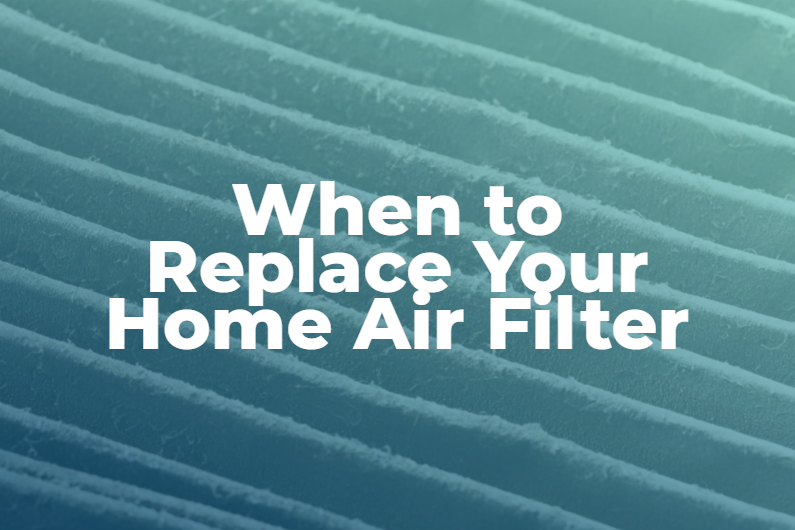
Nov 9, 2021 | Residential Air Conditioning, Residential Heating
A dirty air filter reduces airflow, which can prevent your heater or air conditioner from working properly. It also means you’ll be using more energy to heat or cool the same space when an air filters is clogged with dirt and debris. Dirty air filters could impact indoor air quality by trapping dust, pollen, pet dander and other particles that can aggravate allergies and asthma. A dirty air filter can also damage heating and cooling equipment and reduce system efficiency, which will cause your HVAC system to work harder and shorten its life. Your heater or air conditioner may experience increased wear and tear when the unit runs for a longer period of time. What Air Filters Do Air filters are designed to remove particles from the air inside your home. Airborne particles can come from a variety of sources, including dust and pollen in the outdoor environment, pet dander, cigarette smoke or other chemicals that may be present in your home’s indoor air supply. Most homeowners have their own needs for an air filter based on allergies and asthma symptoms they experience when exposed to airborne irritants. Air filters typically work by trapping these particles before they reach you and cause irritation or illness. A dirty air filter will not only reduce airflow into the system but also damage heating and cooling equipment which reduces efficiency causing more wear on systems requiring longer run times to complete tasks such as heating a room or cooling it down during warmer months where this is more of a concern. Signs It’s Time to Replace Your Air Filter If...
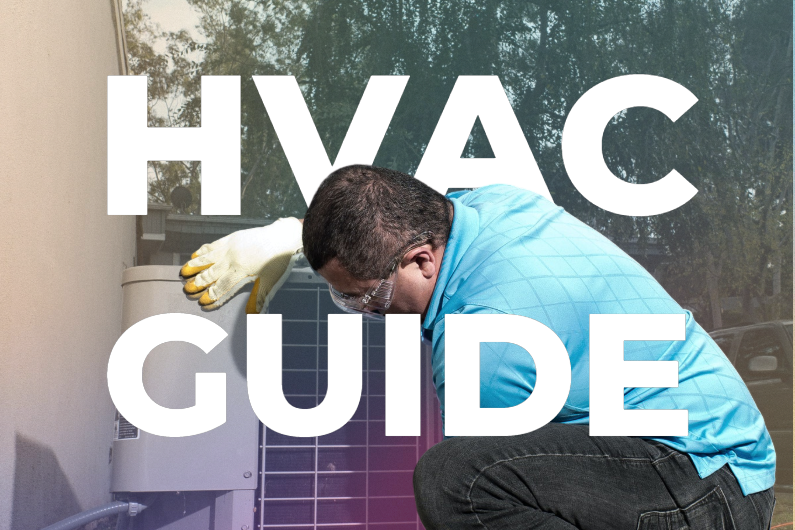
Sep 16, 2021 | Residential Air Conditioning, Residential Heating
Imagine your home couldn’t heat up on a chilly and frigid day. Likewise, imagine your home being unable to cool down when the temperatures skyrocket. This is essentially the position you’d be in if your home lacked an HVAC system. HVAC stands for Heating, Ventilation, and Air Conditioning. And it’s a necessity for achieving a state of quality air control and regulated temperature in your home. In this HVAC guide, you will learn about how your HVAC system works, why it’s important to your home, as well as some of the best options that are available to you if you need a replacement. An Introductory Step: Stop any Air Leaks Prior to paying for a completely new and up-to-date HVAC system, try to do some preliminary screening to see if there are any issues. Sometimes there might be something minor that doesn’t require a complete overhaul of your system. Homeowners in this situation can usually benefit from looking at some HVAC companies and hiring an expert for an evaluation. This will inform you of any energy leakage that may be taking place in your home. Additionally, this is a very wise first step, because the heating and cooling in your home results in almost half of the typical household’s energy output. Also, this process will let you know if you should insulate certain areas of your living space. By doing so, you can enhance the efficiency of your current HVAC system as well as save money when it comes to energy usage. Second Step: Ensure You Get the Right Size System Getting the right size is paramount. A system that’s...









